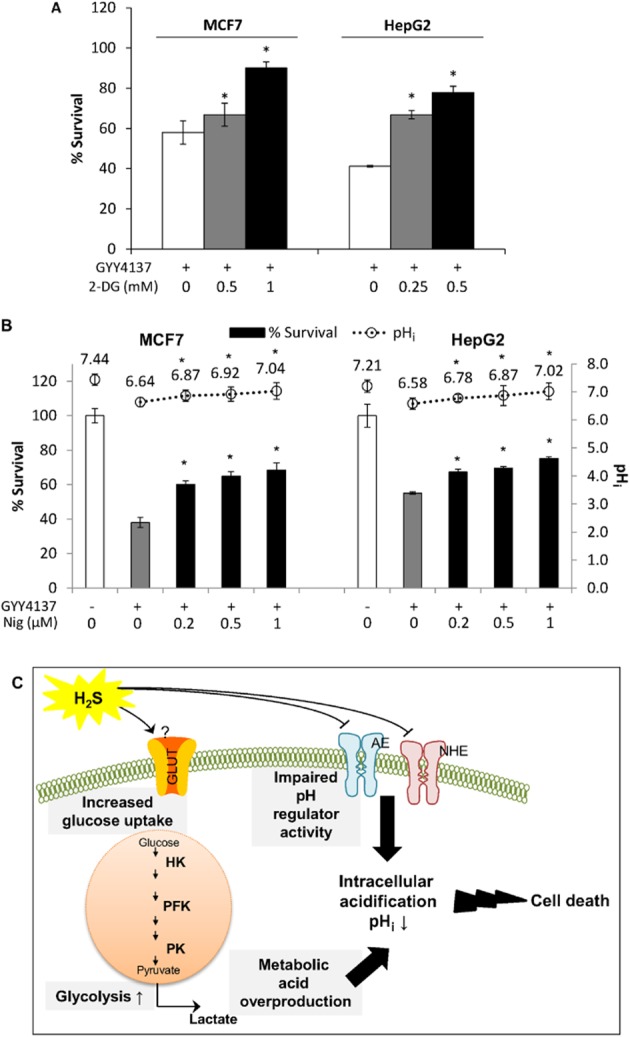Figure 7.

Acid accumulation in cells drives cancer cell death. (A) Partial inhibition of glycolysis with 2-deoxyglucose (2-DG) was able to reverse GYY4137 (400 μM)-induced cancer cell death in MCF7 and HepG2 cells. (B) Reversal of pHi acidification using nigericin ionophore (Nig) resulted in increasing MCF7 and HepG2 cancer cell survival (left axis, bar chart) coupled with increasing pHi (right axis, dot graph) (n = 3 for cell survival, n ≥ 30 cells per group for pHi measurement). Results are mean ± SD. *P < 0.05 as compared to GYY4137-treated alone group. (C) Schematic diagram illustrating the potential of H2S to alter glycolysis, impair pH balance and thence provoke cancer cell death. H2S promotes an influx of glucose and triggers enhanced glycolysis. Overproduction of lactate, coupled with impaired activity of pH regulators results in accumulation of acid and reduction of pHi. pHi then serves as a stimulus to induce cancer cell death. AE, anion exchanger; GLUT, glucose transporter; HK, hexokinase; NHE, sodium/proton exchanger; PFK, phosphofructokinase; PK, pyruvate kinase.
